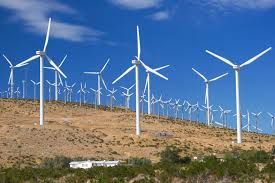Use of sustainable wind energy in traditional architecture of windmills in Iran
Keywords:
Windmill, Sustainable architecture, Wind energy, ConservationAbstract
One of the main principles of sustainablearchitecture is the use of renewable energy. Aerodynamic force wind and its energywere effective in ventilation, heating, cooling and milling the grain inhot-dry areas of Iran. According to studies on the local, windmills known asAsbads. Windmills (asbads) are located in theeastern part of Iran (the southern part of Khorasan and Sistan).people in this partof Iran due to lack of water used 120-day winds for milling wheat and producingflour. The major purpose of this paper was to explore how windmills in Iranwork via using the sustainable wind energy and analyze the indexes ofsustainable architecture in such traditional buildings. History, origin andperformance manner of windmills in using the sustainable wind energy areproposed by means of descriptive-analytical methods and collecting data throughhistorical study and field study methods. Then principles and indexes ofsustainable architecture in vernacular architecture of Windmills (asbads) arementioned. Finally, it is concluded thatrecognition, introduction, and conservation of such buildings throughdocumentation, proposing comprehensive plans for restoration and registeringthem in the World Heritage List can be effective on building an appropriateenvironment, improving the energy consumption pattern, attracting tourists andcultural, artistic and economic development. Moreover, creativity of theIranian desert dwellers in building these monuments and how they have adaptedto the nature are displayed.References
Ansari, D., 1925. Nokhbat Al Dahr Fi Ajaieb Al Bahr Va Al Bar, Tehran: Rooz co.
Estakhri, A.E.E., 1969. Masalek and Al mamalk,Tehran. Translat. Publish. Co.
Farshad, M., 2009. History of Engineering in Iran.Tehran. Miromahpublicat.
Forbes, R.J., 1955-1972. Stud. Anc. Technol., 9 vols.Leeiden.
Ghazvini, E.A.M.Z., 1943. Asar Al Belad Va Akhbar Al Ibad .Tehran: Islam Co.
Hedin, S., 1977. Iranian Deserts. Tehran: Toka.
Khosravi, R., 1988. Information about Quartermaster, Khargerd, Nashtifan, Mehrabad Zaveh Histor. Geography.
Moeen, M., 1984. Moeen Encyclopedia. Tehran. Amir Kabir publicat.
Nderi, B., 1977. Windmills of Khof”:Art pepoel J. Number., 177-178.
Saeidian, A., Bemanian, M.R., et al., 2012. A survey in sustainable design of Iranian windmill technology in desert
areas. Elixir Int. J., Number. 48.
Sistani, I.A., 1989. Bozorgan Sistan, Tehran: Morghe Aeen.
Town and Country Planning Association (TCPA2)., 2006. Sustainable energy by design: London, Sw1Y5AS.

Published
How to Cite
Issue
Section
Copyright (c) 2020 Maryam Jafari Farsani, Akram Shamsipour, Zahra Naghdi

This work is licensed under a Creative Commons Attribution-NonCommercial-NoDerivatives 4.0 International License.



